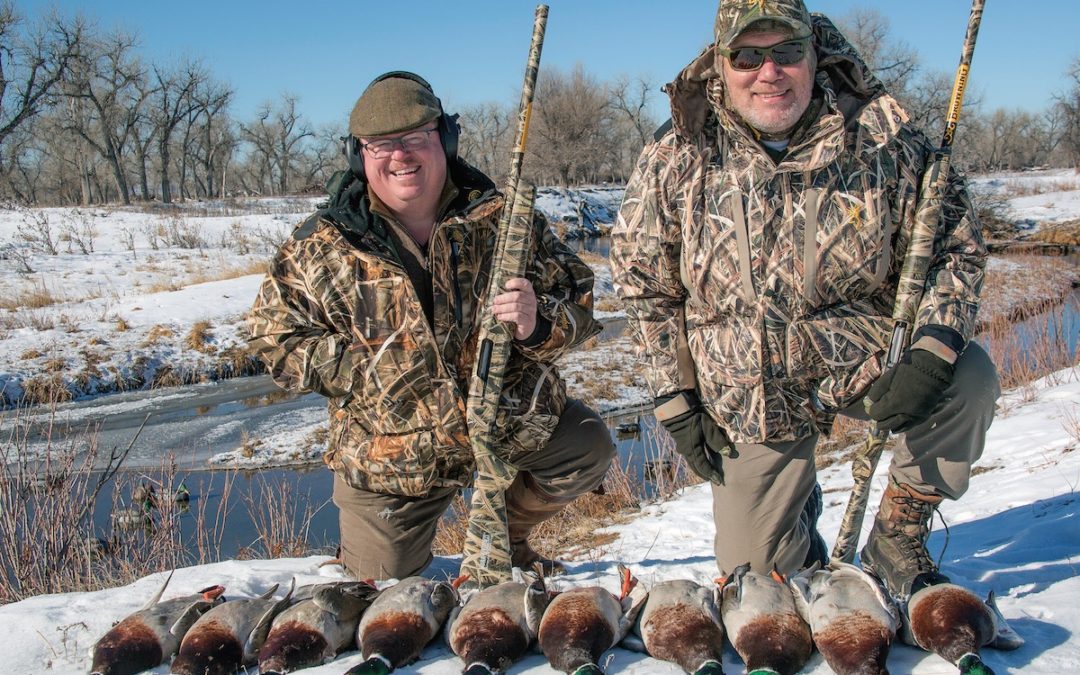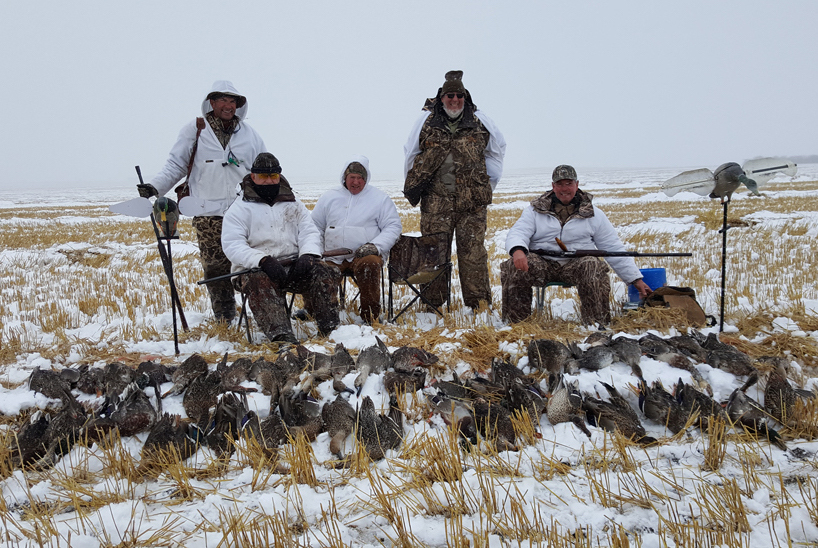As the duck and goose seasons began, this fellow did not have to wait to get second-hand waterfowl reports. When the first waves of teal came in, he was likely sitting on his front porch, watching these speedsters jink and jive before cupping their wings and finally dropping down into one of his ponds. He was also well aware, of course, how the weather influenced the movement of local waterfowl.
Ahead of a storm, ducks would leave the big water of the bay and make a beeline to his ponds, piling in until it seemed that every mallard in the area had taken up residence on his farm. Late in the season, when the cold really set in, Canada geese would reliably return to his cornfields, looking to scratch up whatever kernels remained on the ground.
Throughout the season, he knew which species of birds were around and, depending on the weather, the routine of their daily movements. While not every day of the season was a great duckin’day at his farm, he could clearly predict those days—and there were lots of them—when the hunting would be outstanding.
Most all of us, of course, do not have this ace up our sleeve depending, instead, on a lucky roll of the dice. Have we chosen the right place and right time for an upcoming hunt? Sure, if we’re hunting preserve birds, we know we’ll get in some shooting, but when it comes to wild birds, the odds get dicier, especially when making plans more than a few months ahead. As often as not, it’s a toss-up between good hunting and ending up sitting in a blind sipping lukewarm coffee and retelling old jokes.
One answer to this dilemma is to book your next duck and goose hunt at Cheyenne Ridge’s North Platte Outpost, which is located near the city of Scott’s Bluff in the far southwest corner of Nebraska. While this area may not have the storied waterfowl history of places such as Maryland’s Eastern Shore or Stuttgart, Arkansas, the duck and goose hunting here—especially late in the season—may well be, in terms of numbers and predictability, among the very best in the nation.
In the fall and winter months, ducks and geese require a dependable food source and open water. Combine the two conveniently side-by-side, and you end up with an irresistible smorgasbord that not only attracts but also holds waterfowl through the season, especially so when such resources are concentrated in one area and are not widespread.

North Platte Outpost encompasses more than 5,000 acres, mostly agricultural fields but also including, critically, three miles of river frontage on the North Platte and the land around several small tributaries to the river, spring-fed creeks that do not freeze up even during the coldest winters. There is precious little other water in this semi-arid region, making the North Platte and its adjacent creeks a “golden hotspot” when it comes to hunting ducks and geese.
In addition to the many grainfields that abut the river’s edge, the lodge is close by several large cattle feeding operations, and it’s the scattered corn for the livestock that provides a daily feast to thousands of mallards. And it’s not just greenheads, but also perhaps even greater numbers of Canada geese that remain in the area to take advantage of the abundant feed and open water.
In short, the property and surrounding farms hold huge numbers of waterfowl through the winter months and, as sure as rain, each day these birds move between feeding areas and water.

Canada geese drop into the river after feeding in the surrounding grainfields.
At the Outpost, hunting is either from blinds on the North Platte itself, a tributary water such as Nine Mile Creek or one of the lodge’s many flooded fields right off the river. With multiple hunting locations, the lodge is able to rest different spots on a weekly rotation. Every hunting blind is literally only a few minutes from the lodge, ensuring that, at the end of the day when guns are unloaded and cased, your first cocktail is only minutes away.
This past January I had the opportunity to hunt for a few days at the Outpost with outdoor brand guru and noted wildlife photographer John DePalma and Sean Finley, director of sales for John Burrell’s High Adventure Company. Burrell’s operation manages North Platte Outpost as well as managing/owning some of the best hunting and fishing lodges here in the states and around the world.
I should note that Sean is also the company’s executive chef who moves from their Cheyenne Ridge Signature Lodge in South Dakota to North Platte Outpost later in the season. Food at your typical hunting lodge is often best described as being “hearty” and “plentiful.” For certain you won’t go hungry at the Outpost, but instead of just “stick to your ribs” fare, thanks to Sean’s magic in the kitchen, you’ll enjoy a true culinary experience with appetizers such as smoked pheasant dip and duck empanadas followed by Sean’s cover-the-whole-plate and melt-in-your-mouth prime rib, goat cheese and basil stuffed chicken breast or, my favorite, bacon-wrapped duck breast smoked over apple wood. The wine pairings with dinner are spot on and at a premium level.
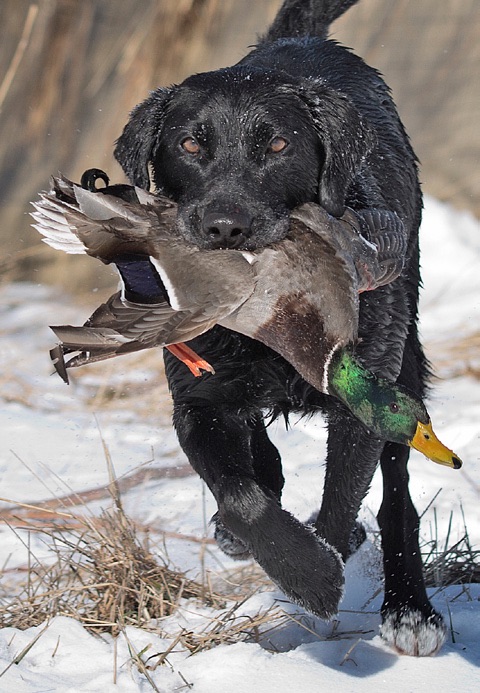
I might add, that with the hunting close by, guests return to the lodge for lunch, and I guarantee you it won’t be grilled cheese sandwiches and canned tomato soup. The winner for me on this trip: homemade buffalo sausages atop real mashed potatoes drizzled with a blueberry reduction sauce and accompanied by fresh green beans. A quick nap before the afternoon hunt?
For this hunt, John DePalma brought a few of Browning’s Maxus autoloading shotguns decked out in Mossy Oak’s Shadow Grass Blades camo pattern. In recent years, I recognize the Italians have garnered much of the press—and deservedly so—when it comes to semi-auto smoothbores but, in my opinion, the Maxus is a strong frontrunner as well. It’s as reliable as any shotgun of the type, and features all the bells and whistles expected in today’s premium autoloader.
Thanks to Browning’s Power Drive Gas System and Inflex Technology recoil pad, the Maxus is exceptionally soft on the shoulder, even with heavy duck and goose loads. Two other things that really set this shotgun apart from others: a surprisingly crisp trigger and a notably light-in-the-hand feel due to the gun’s excellent balance and pointability.
We were using Browning’s BXD Extra Distance waterfowl loads, ammo I’m seeing a lot more of in the field these days. A key to effective steel shot is its roundness. Browning’s loads include premium high-quality shot, and they take the extra step to coat their pellets with a blue zinc-chromate that further reduces imperfections. Browning engineers also make the point that their special wad flies straight and carefully pulls away from the shot column in a way that keeps it tightly packed together so the pellets benefit from a drafting effect that helps maintain speed and results in more energy downrange.

North Platte Outpost is situated within a few hundred years of the Nebraska river.
On my first day, I hunted with guide Ross Juelfs, a superb caller, and we set up above a small pool on Nine Mile Creek, one of the spring-fed tributaries that flow into the North Platte. It was a true winter wonderland setting: a few inches of snow on the ground, and the brush and small branches of the trees glistening in a coating of ice. When we arrived, dozens of mallards exploded from the pool, an extraordinary sight against the rising sun and snow-filled backdrop.
Ross set out about two-dozen decoys and we—I with my Maxus and John DePalma with his camera—hunkered down, keeping our hands warm over the propane heaters in the blind. Within the hour, the ducks began winging back to the creek, mostly singles and pairs, making it easy to pick out the drakes as they circled above before committing to our set. I had my limit of five mallards well in time to return to the lodge for a sumptuous lunch.
That afternoon, we headed across the North Platte and settled into a pit in the middle of a huge grainfield, the wind and the river to our back. I grew up hunting Canada geese on Maryland’s Eastern Shore and have seen large numbers of these majestic birds in the air but perhaps never so many as I saw that afternoon flying into the fields and, later in the afternoon, making their way back to the river.

Guides Ross Juelfs (left) and Scott Bodamer gather the decoys after a morning shoot in what the author termed a “winter wonderland.”
It’s difficult to bring in large flocks of geese but, as I’ve seen in the past, four or a few more would occasionally break from their formation and come into our spread. Within two hours, I had my limit of five birds, including—if I may say so—a nice double on a pair of fly-bys.
The next day, Sean was able to join me for the morning duck hunt. This time, Ross was joined by guide Scott Bodamer, a professional dog trainer during the off-season. We set up in a blind directly on the North Platte where within the first hour and a half, Sean dropped five drakes with five shots. I was up next and got my limit with seven shots. Of course, by the time I started shooting, the sun was directly in my face. Hey, we all need an excuse!
I did not have the opportunity, but the Outpost also offers pheasant and chukar hunts on their property. You can hunt ducks in the morning and then hunt upland birds or geese in the afternoon.
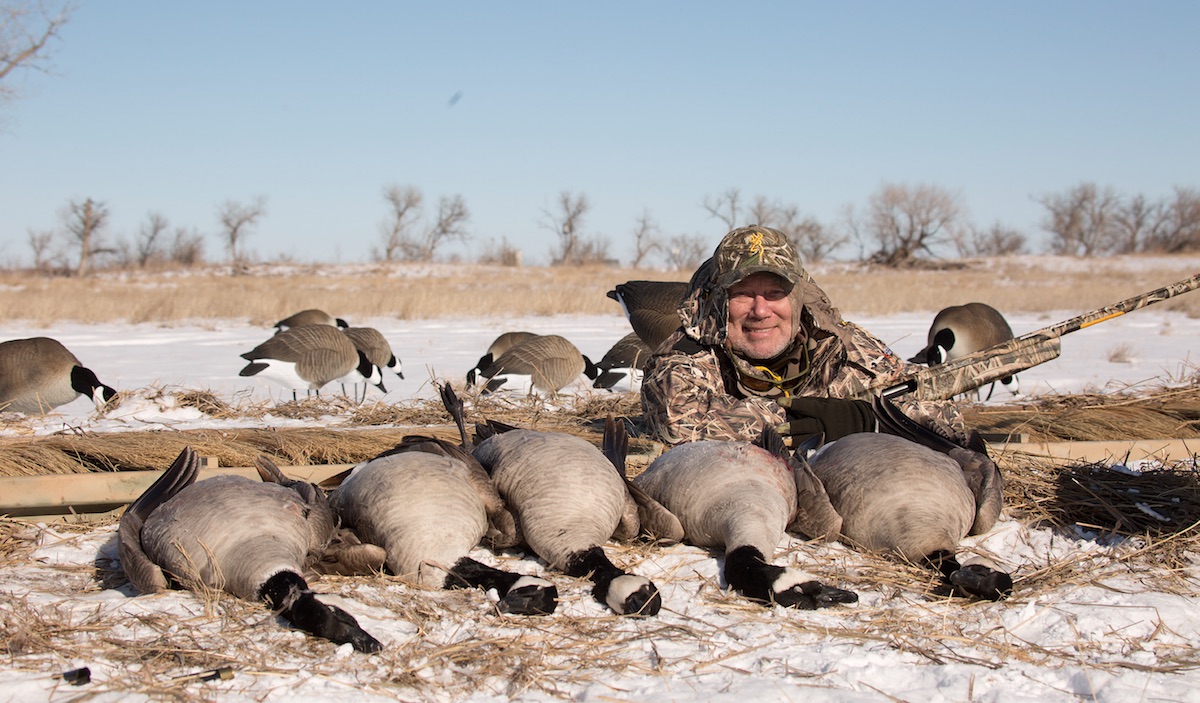
The author shot these big Canadas on his afternoon hunt on the river.
I’ve always liked the High Adventure Company’s all-inclusive approach for their guests’ hunts. Once at the lodge, there’s no nickel and diming—everything, from your license, unlimited ammo, loaner shotguns, bird cleaning and shipping as well as a bar stocked with top shelf brands is included in the base price.
There’s no sure thing when it comes to hunting; indeed, it wouldn’t be hunting if it were a slam dunk deal. Next to owning your own duck camp, however, perhaps your best bet for enjoying a great late-season duck and goose hunt is to spend a few days at North Platte Outpost. And, unlike my friend who did have his own hunting hotspot, you won’t have to do the dishes after dinner.
Photos by John DePalma
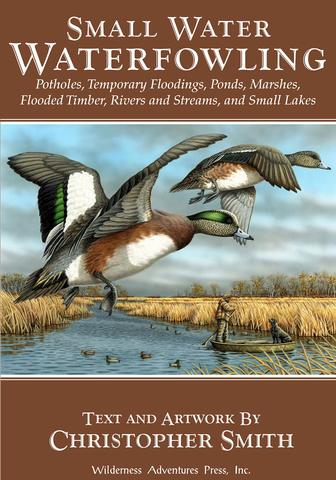 The North Atlantic, the Great Lakes, the Gulf Coast, the waves and the wind and the ducks – there’s no doubt that big water holds a lure for waterfowlers unlike any other.
The North Atlantic, the Great Lakes, the Gulf Coast, the waves and the wind and the ducks – there’s no doubt that big water holds a lure for waterfowlers unlike any other.
But when it comes to actually shooting ducks and geese over water, the action is on the small places – the inland lakes, the ponds and potholes, the floodings and creeks and backwaters. Day in and day out, that’s where the ducks are, and that’s where Chris Smith takes you.
However, each of these places requires a separate technique, alternate decoys spreads and calling concepts, and different gear to use. He tells you how to approach each type of hunting for the weather and conditions. He knows when and when not to call. He describes the skills a good waterfowl dog needs to know for each place, things he’s taught his succession of Labrador retrievers over the years.
His knowledge of duck and goose hunting has been earned through both experience and education. A native of Michigan, he holds a BS in Wildlife Management from LSSU in Michigan’s Upper Peninsula which, he jokes, “was a good way to go to class in the morning and duck hunt in the afternoon.” His love for waterfowl has come through in the 20-plus years panting wildlife in his “other” job, with four state duck stamp titles and two state Ducks Unlimited Sponsor Print titles to his credit, as well as placing high in the national event.
But what sets him apart is his skill, his knowledge, and his techniques accumulated over nearly four decades, a dozen states, and a half-dozen Canadian provinces.
In a spot where more is often viewed as better, Smith weaves throughout personal hunting stories the important roles ethics play for the modern-day ‘fowler, how a full bag limit isn’t the end goal, but rather icing on the cake.
In all, this is one of the finest treatises on waterfowling to come out in years—because small water means big sport. Buy Now

